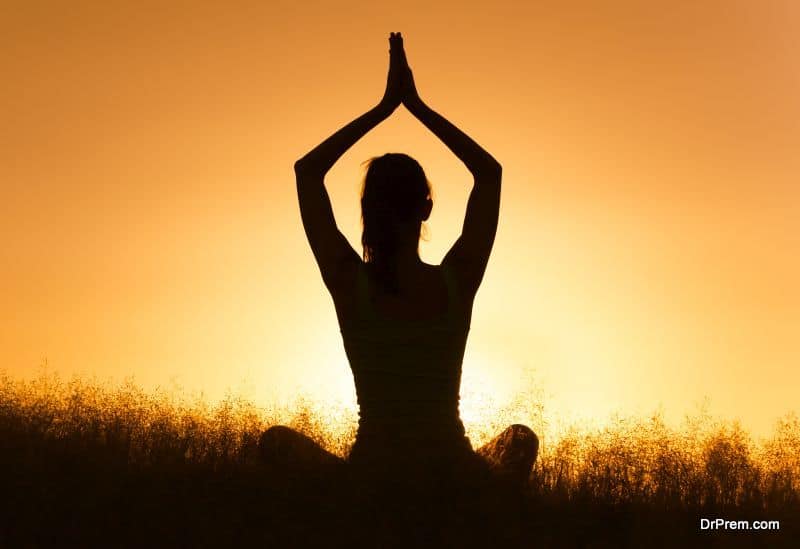Patanjali is the union of different forms of Yoga Sutras. Its primary aim is to blend the human soul with the divine almighty. The history behind the origin of Patanjali Yoga and what was its impact is a fascinating one.
Lord Vishnu, while existing in his Lord Dhanvanthari incarnation was approached by all the sages, because although he had delivered cure for most of the diseases, people still did not feel healthy and hearty inwards. The illness was not always a physical one but also mental and emotional. They asked him how to eliminate the negative feelings like anger, greed and lust that keep on polluting the mind?
Vishnu was sitting on the thousand headed serpent Adishésha whom he ordered to be born as a mortal. Thus, symbol of awareness was granted to the snake who took birth as Maharshi Patanjali that is, the great saint Patanjali, who gave knowledge of the nine Antarayas (intruders in the path of yoga):
- Vyadhi (physical disease): Be fit and healthy and free from the ailment is of primary importance.
- Styana (mental laziness): Will power helps to overcome this barrier. Hence discrimination to absorb the essence of Yoga principles is essential.
- Samsaya (doubt): The brain is ignorant of the benefits of concentration. When doubts arise, faith gets washed away. So believe in spiritual Guru and the sacred texts.
- Pramada (heedlessness): One must pay attention to their duty of cultivating virtue and being righteous.
- Alasya (physical laziness): Alasya is mental lethargy that can attract poverty and other vices.
- Avirati (detachment): Shunning the love towards material earthly wonders is of utmost importance.
- Bhrantidarsana (false perception): Excessive pride in oneself and arrogance must not be cultivated as it is sure to cause eminent downfall for a Yogi.
- Alabdha- bhumikatva (non-attainment of yogic states): We all have different drawbacks and self-realization to curbing down such traits must be practiced.
- Anavasthitatva (falling away from yogic states attained): A yogi should consider his actions, lest he has to pay the prices.
He also explained the different types of Viksepasahabhuvah (co-existing with mental distraction):
- Dukha: Sorrow can hamper the mental peace of Yogis
- Daurmanasya: Disappointment can be unhealthy and must be curbed with discrimination
- Angamejayatva: Physical impatience when nerve control is lost by unstable mind
- Svasa and prasvasa: Rapid non-rhythmic breathing can affect stable Yogic posture
Vrittis are modifications in mind that can be classified as:
- Pramana (true cognition)
- Viparyaya (false cognition)
- Vikalpa (verbal cognition)
- Nidra (deep sleep)
- Smriti (memory)
The eight steps for practicing yoga are:
- Yama (restraint)
- Niyama (culture)
- Asana (posture)
- Pranayama(control of psychic prana)
- Pratyahara (withdrawal of senses)
- Dharana (fixed attention)
- Dhyana (meditation)
- Samadhi (perfect concentration resulting in super consciousness)








